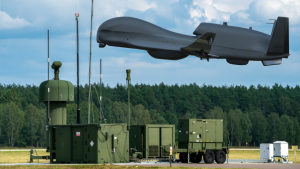This year’s stock market growth, driven by tech companies, overlooked some undervalued stocks despite their solid performance. These stocks, currently underpriced, could gain momentum as the market broadens and the Federal Reserve begins easing monetary policy in Q3. Lower interest rates often boost undervalued stocks, presenting opportunities for investors to buy on the dip.
Despite the market absorbing all available data, some undervalued, established companies may still go unnoticed. Here are a few to watch.
Most Undervalued Stocks: JPMorgan Chase (JPM)

Recently launching their own AI tool, JPMorgan Chase (NYSE:JPM) is best known for its asset and wealth management services. This tool assists with writing, idea generation, and summarizing documents, functioning like a research analyst. It was detailed in an internal memo and aims to enhance productivity alongside existing apps like Connect Coach and SpectrumGPT.
The company introduced LLM Suite to around 50,000 employees this year, making it one of Wall Street’s largest AI rollouts. While Morgan Stanley collaborates with OpenAI for its wealth management, it’s unclear if LLM Suite has faced issues like other AI models, which sometimes provide inaccurate information.
Moreover, the LLM Suite gave access to top language models, supported by CEO Jamie Dimon. He viewed AI as transformative, and essential for enhancing efficiency and decision-making. This shift democratized information, allowing better, faster strategic decisions. Generative AI in finance will become more transformative, integrating with enterprise systems to enhance data analysis and provide personalized advice. Adapting will provide a significant edge, while hesitation may result in being left behind.
The stock increased 35% in 2023 due to lower interest rate expectations and robust Q2 2024 results. JPM also reports a $4.40 EPS and a revenue of $50.99 billion due to a 50% increase in investment banking fees. Currently, the stock trades 12x forward earnings and has a 2.16% dividend yield.
Altria Group (MO)

Now expanding other options in the e-vapor business, Altria Group (NYSE:MO) also has a strong forward dividend yield of 7.9%. Now that the nicotine market is shifting to e-cigarettes and oral pouches, Altria is also adapting to this shift despite being dominant with Marlboro. It’s On! brand grew its oral nicotine share to 7.1% and NJOY’s market share rose to 11.5% after broadening distribution. While still reliant on smokeable products, Altria’s progress in next-gen markets shows promise for future growth.
In Q1 2024, Altria’s NJOY products can be seen in over 800,000 locations, nearing its 100,000 location goals for this year. NOJY’s retail share in the U.S. surged 4.3%. This indicates strong consumer acceptance and successful promotional strategies. Currently, the company holds a significant part in market share, solidifying its position.
On July 31, MO stock declined $47.78 after it announced missed Q2 earnings estimates and a narrowed 2024 guidance. The stock saw an 18% rise this year, but the company’s adjusted EBITDA fell short at $1.31. CEO Billy Gillford highlighted its strong performance in smoke-free products. Full-year guidance is now between $5.07 to $5.15 per share.
Northrop Corp (NOC)

Northrop Grumman (NYSE:NOC) consistently exceeded earnings estimates, reporting $6.36 EPS against a $5.95 estimate in July 2024. Projected earnings are $24.99 per share for the current year, with a 7.3% EPS growth. For the next year, earnings are expected at $27.71 per share, reflecting a 10.87% increase. Despite its current 52-week high, future valuation metrics will be crucial for assessing potential stock movement.
However, Q2 results which went out recently, show a rebound. Earnings were $6.36 per share and revenue at $10.2 billion. The stock also rose while the company announced it raised its full-year 2024 guidance. CEO Kathy Warden highlighted Northrop’s focus on expanding profitability through strategic investments and increased productivity. She reassured that cost escalators in the B-21 bomber contract would ensure profitability despite concerns over rising supply-chain costs.
On July 12, Northrop Grumman’s Cygnus cargo ship, “SS Patty Hilliard Robertson,” left the ISS with 8,200 pounds of supplies. The company also launched two satellites for Space Norway’s Arctic Satellite Broadband Mission, utilizing GEOStar-3 technology for northern polar and military communications. Moreover, NOC and Boeing have partnered for the Space Force’s anti-jamming satellite. Northrop Grumman anticipates a 15% improvement in cash flow by 2026 and plans to boost its dividend.
On the date of publication, the responsible editor did not have (either directly or indirectly) any positions in the securities mentioned in this article.
On the date of publication, Chris MacDonald did not hold (either directly or indirectly) any positions in the securities mentioned in this article. The opinions expressed in this article are those of the writer, subject to the InvestorPlace.com Publishing Guidelines.
Chris MacDonald’s love for investing led him to pursue an MBA in Finance and take on a number of management roles in corporate finance and venture capital over the past 15 years. His experience as a financial analyst in the past, coupled with his fervor for finding undervalued growth opportunities, contribute to his conservative, long-term investing perspective.
